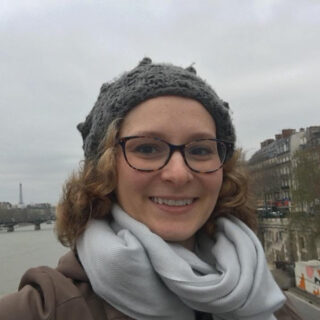Ben Willingham shares childhood memories, stories, songs, and poems from Oglethorpe County, Georgia, in his interview. He discusses working for a Confederate widow and a Jewish family. MSS-AV 1140.0221.001 (audio), VIS 1999.305-Box 4-Folder 2
When people think of an archival collection, they envision physical material like letters or diaries. These and other two-dimensional materials indeed make up the bulk of the collections at Atlanta History Center’s Kenan Research Center. However, the collections also contain more than 2,000 audio assets including cassettes, reel-to-reels, and records. These components can be challenging to care for because magnetic storage degrades over time, and typically only lasts 10-50 years. Digitization is the best solution to extend this material’s lifespan. Plus, once digitized, Kenan Research Center staff can make the audio available to researchers.
One of the largest audio-visual collections at Kenan Research Center is the John Burrison Georgia Folklore Archives, which includes more than 1,600 recordings. It is a unique resource that contains interviews conducted by Georgia State University students enrolled in Dr. John Burrison’s folklore course. Students interviewed men, women, and children in Georgia and across the southeast on topics including crafts, storytelling, superstitions, jokes, remedies, songs and ballads, and traditions.
The collection is particularly valuable because folk traditions offer scholars one of the sharpest insights into the mindset and values of ordinary people, but few states are as underrepresented as Georgia. The lack of documentation in Georgia is explained in Dr. Burrison’s Roots of a Region: Southern Folk Culture, on pages 159-162. Additionally, many of those interviewed lived in rural, and often isolated areas, where less documentation in general survives.
The oral histories document both an underrepresented subject, folk traditions, as well as an underrepresented population, rural Georgians.
The oral histories document both an underrepresented subject, folk traditions, as well as an underrepresented population, rural Georgians.
In an interview, Ruby Ellis (pictured) tells a story about a girl captured and raised by Native Americans and retells the fairy tale Bluebeard. MSS-AV 1140.0181.001(audio), VIS 1999.305-Box 3-Folder 38 (photo). Kenan Research Center at Atlanta History Center
Some of the interviewees document further marginalized minorities. The bulk of such content is about African Americans, but there are also stories about Native Americans, immigrants, and Jews. The collection contains recordings by white Southerners that document perceptions and stereotypes of these minorities; and more importantly, there are recordings by the people themselves that document their folklife in their own words.
Recognizing the fragility and importance of this collection, staff at Kenan Research Center has sought opportunities to fund its digitization. So far, the team has received funding from National Recording Preservation Foundation (to digitize 242 recordings), Digital Library of Georgia (to digitize 149 recordings), and Georgia Historical Records Advisory Council (to digitize 233 recordings). The staff at Kenan Research Center plan to digitize an additional 313 records later this year, which would bring the number up to 885, which is about half of the total 1673 records.
A quilt from… In the accompanying audio, members of the Old Campbell County Quilting Society explain and demonstrate different quilting techniques. MSS-AV 1140.0325.001 (audio) 1999.305-Box 5-Folder 26 III and XVII (photos). Kenan Research Center at Atlanta History Center
Once digitized, KRC staff catalogs the audio so that it can be published on Album. Since 2020, interns and staff have been using the Dublin Core content standard to write this metadata, and so far, they have published 372 records that include detailed summaries of the audio. While writing this metadata, the KRC team ran into various challenges. For one, some of the audio is difficult to understand because the recording quality varies greatly. Also, the interviews date back to the mid-1960s, and language has changed drastically since then. Therefore, KRC staff had to contend with problematic, and sometimes racist, language.
Despite these difficulties, or perhaps because of them, the KRC staff has gained valuable insights into crafting effective metadata. A follow-up post will delve deeper into addressing challenging content through reparative description and provide a closer examination of a few stories from the John Burrison Georgia Folklore Archives collection.


